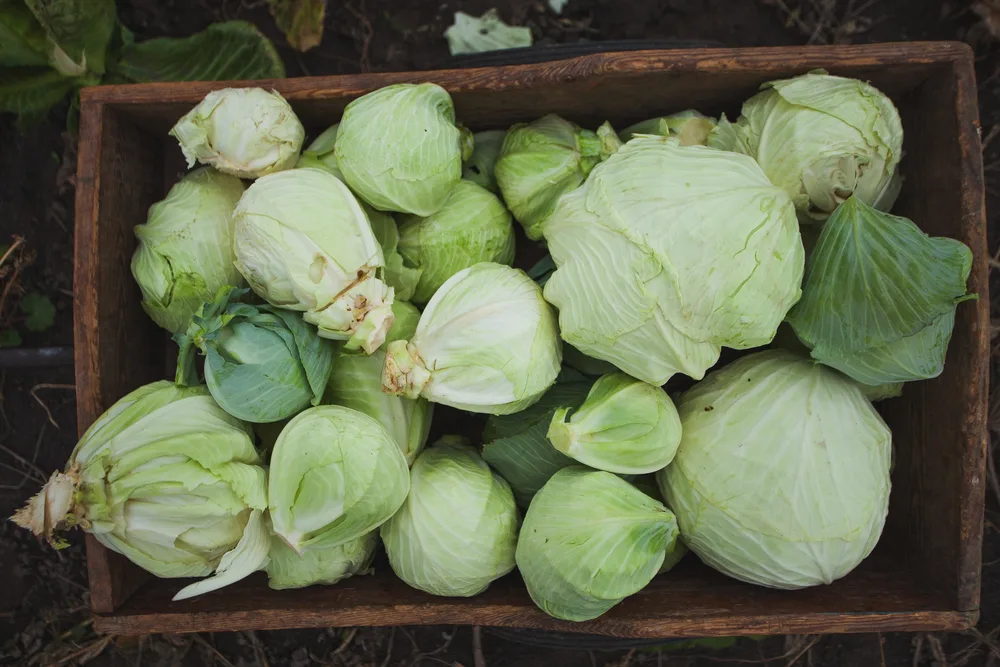
It’s officially autumn, and the leaves are turning colors before our very eyes into beautiful shades of yellows, reds, and oranges.
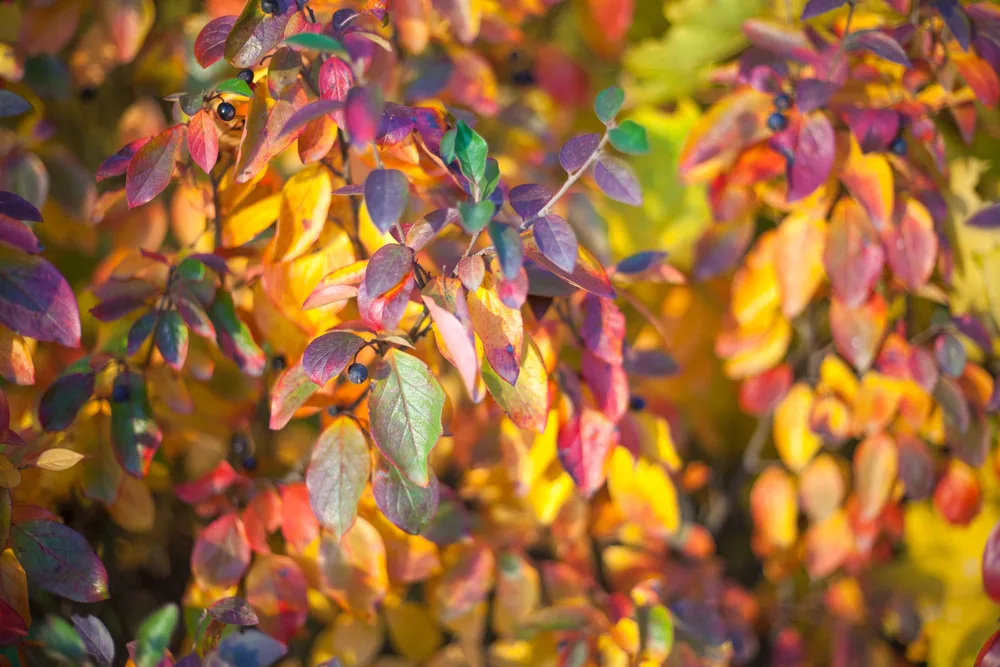
Some of them have already been dipped in beeswax to bring fragrant fall decorations indoors.
The change of seasons means several things.
First, that frosty mornings are getting closer, and harvesting the last of your garden crops is imminent.
Second, that apples will soon be falling and must be picked for storing in the cellar, making apple juice, and vinegar.
And third, cool-season crops are coming to maturity.
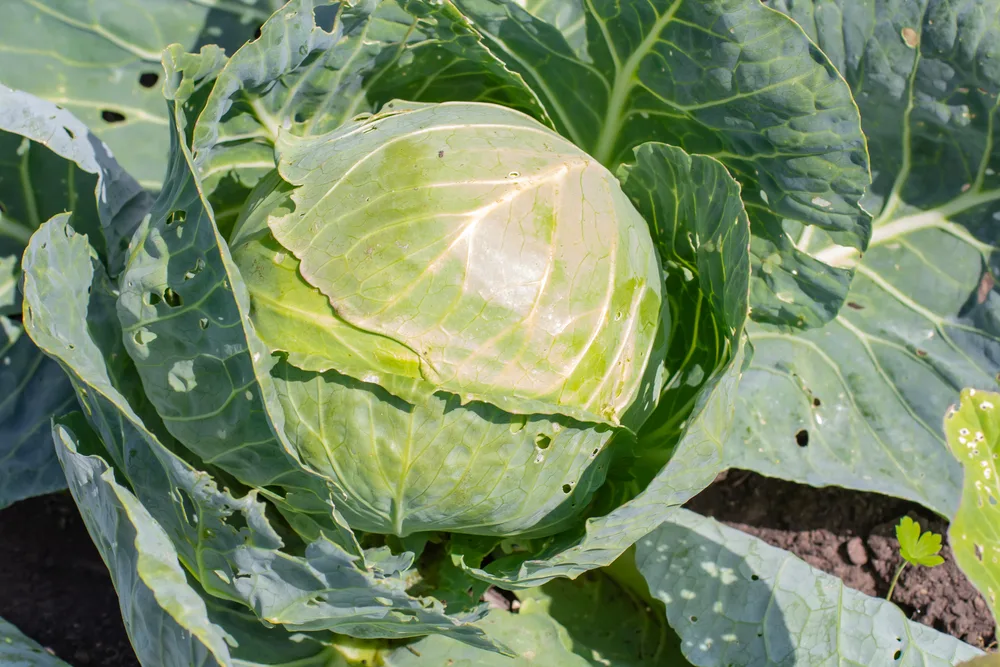
Fall is the time to harvest:
- beets
- chard
- carrots
- cauliflower
- spinach
- kale
- kohlrabi
- broccoli
- turnips
- collard greens
- parsnips
- potatoes
- and, of course, cabbage
If you were a little overzealous in planting your garden with cabbage, or they just took off unexpectedly, chances are good that you’re going to have a lot of them to process all at once. Or not.
As you’ll soon find out, there are ways to store them whole too.
Given there are several ways to store cabbage for 6 months or more, it’s wise to choose more than one preservation method.
Shred some and freeze it, or dehydrate several bags worth. Then store whole heads of them in the cellar, or in the ground.
Diversity always increases your chances of success, and makes your storage failures minimal. Just as a bad apple can ruin the bunch, so too can a cabbage. Though the rotten apple is far less stinky.
To store your cabbages successfully, it’s best to know when and how to harvest them before bringing them in from the garden.
When to harvest cabbage
Harvesting at the right time ensures that you’ll get to experience the best possible flavor and crunch, along with reaping the benefits of vitamins and minerals that cabbages naturally have, and bring up from the soil.
But it’s slightly more complicated than just searching for a solid, firm head.
The harvest time of cabbage depends greatly on the varieties you’ve grown.
Some varieties should be harvested straight away, while others can remain firm (in the garden) for several weeks. The latter ones giving you more time to eat them fresh, and more time to decide on how to save them for later.
That being said, early-harvested varieties are best suited for canning, freezing and dehydrating. These take between 70-100 days to reach maturity. For fresh use, you can expect early cabbages to last 3-6 weeks after harvesting.
Late-season varieties that take anywhere from 120 days or more to reach maturity, can be stored for up to 6 months after harvesting.
Brunswick, January King, Late Flat Dutch and Danish Ballhead cabbages are all wonderful late-season varieties to try out.
When planting your garden, be sure to have both summer and winter varieties, especially if you truly enjoy eating cabbage.
A couple more harvesting tips
One thing to keep an eye out for when harvesting is the weather.
If you are nearing harvest and are also expecting significant rainfall, it’s better to harvest your heads of cabbage early. Mature heads have a tendency to split from being over-watered/irrigated by you, or the rain, making them difficult to preserve.
Another weather condition to watch out for is dipping temperatures. Late varieties can tolerate a frost, even down to 20°F (-6°C), though likely you will have already harvested by then.
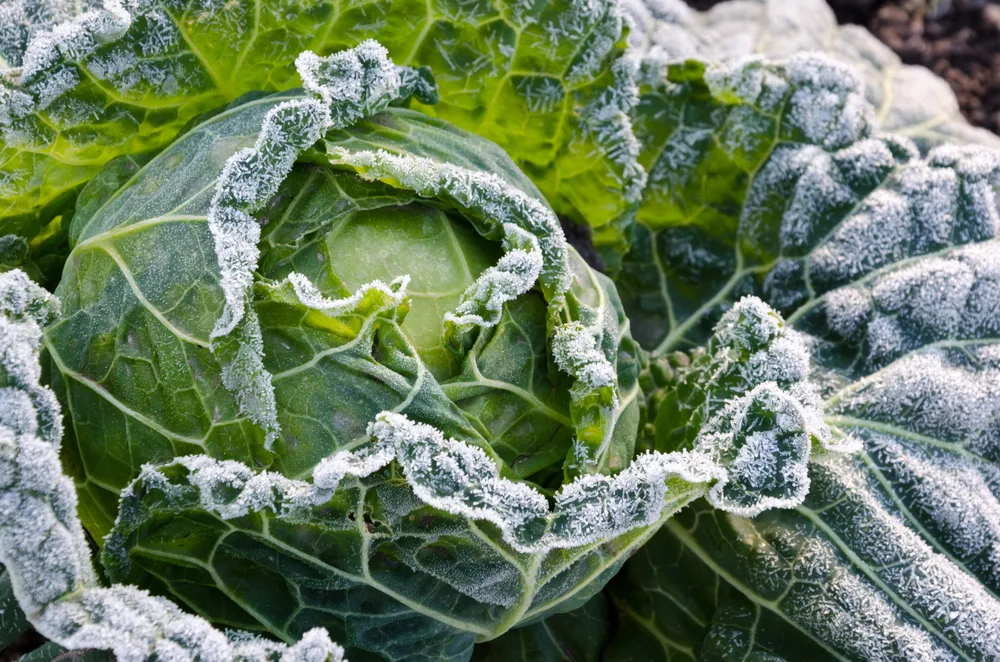
To extend the season, you can use a thick layer of straw, row covers, or blankets on the coldest nights, otherwise, it’s time to pull the cabbages up and store them in a root cellar or dig a storage hole.
To nurture your growing cabbages throughout the season, be sure to read our companion planting guide:
18 Cabbage Family Companion Plants & 4 To Never Grow Together
How to harvest cabbage
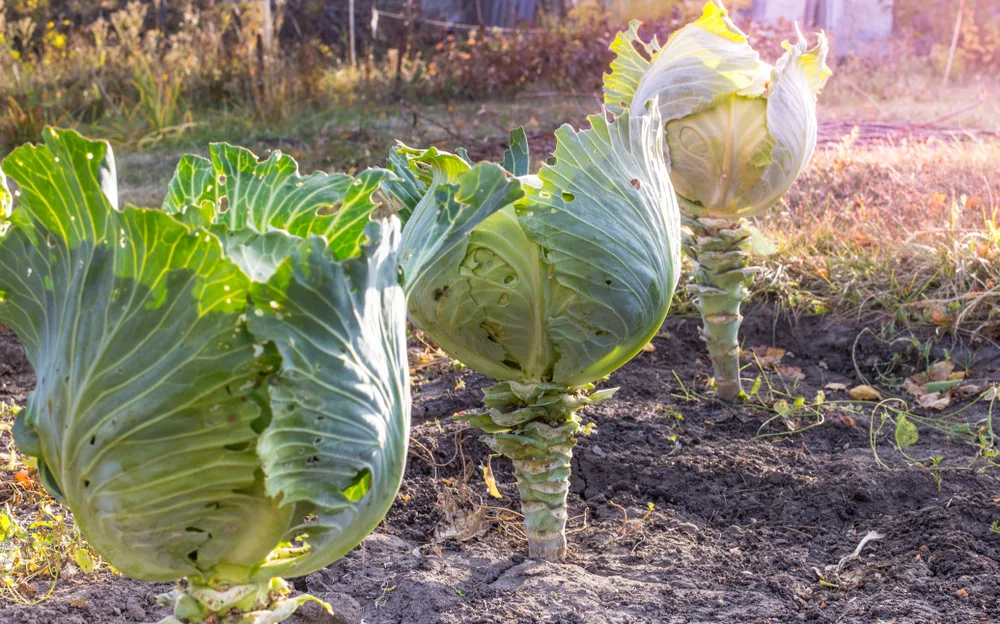
When harvesting cabbage, take a sharp knife (pruners or loppers) and cut the head off of the stem.
Be sure to remove any wilted, yellow or damaged leaves. Then let your backyard farm animals sort through the trimmed outer leaves, or set them straight on the compost pile.
If you’re able to leave some of the stalks behind, you may even get to harvest some smaller leaves a second time. These side-cabbages that form will be small, but completely edible. Perfect for a light lunch with sautéed cabbage and pasta.
Thinking about long-term storage, it’s also practical to pull up the entire plant, roots and all. If you have a root cellar, you can store cabbage with the roots on shelves, or hang them upside down.
Thinking about storing cabbage for winter?
You don’t have to grow your own cabbages to preserve it for winter, you can buy them in bulk too.
When cabbages are ripe for the picking, they’re cheaper than any other vegetable. Plus, it comes in its own natural packaging consisting of outer leaves that you can toss on the compost.
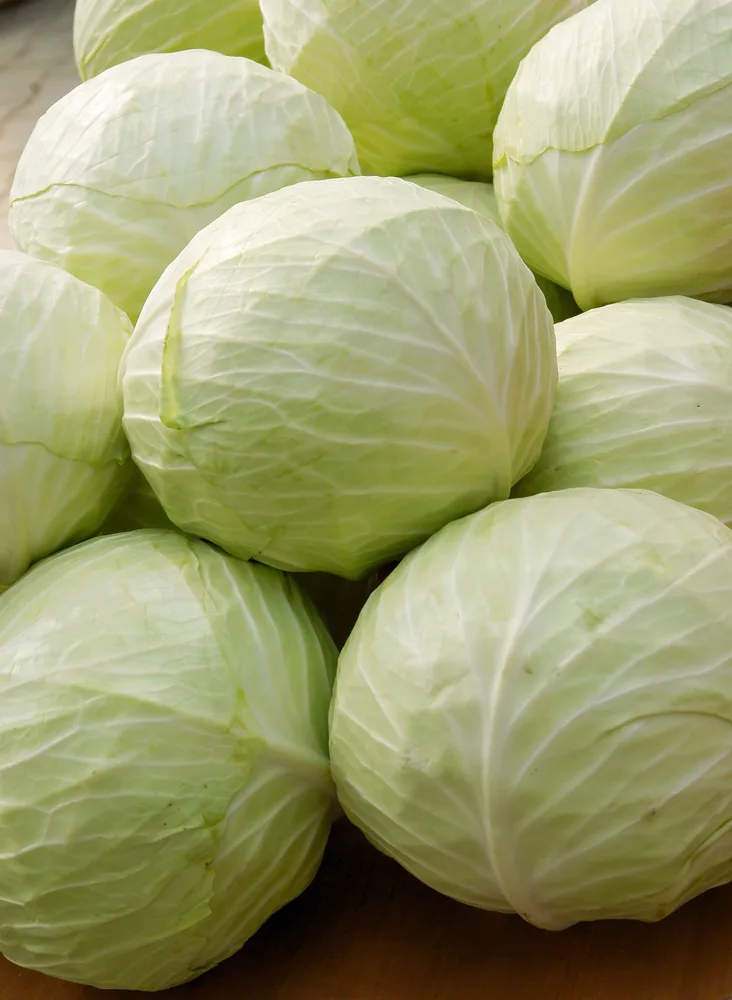
Buy 20 heads at once and you’ll be set for winter cabbage eating.
That is, if you know how to store and preserve them correctly.
Let’s go through the most common ways, to find out what kind of cabbage-eater you are.
1. Fermentation
This has to be my favorite way of eating cabbage, hands down, outside of coleslaw.
Did you know traditionally fermented foods increase your gut bacteria and digestive enzymes? Which, in turn, enhances your immune system.
It seems you can’t go wrong with food that has hidden benefits.
Besides making sauerkraut, you will also want to try making honey-fermented garlic, lacto-fermented garlic, probiotic rich carrots and wild fermented salsa to gain a healthier perspective on life.
Sauerkraut
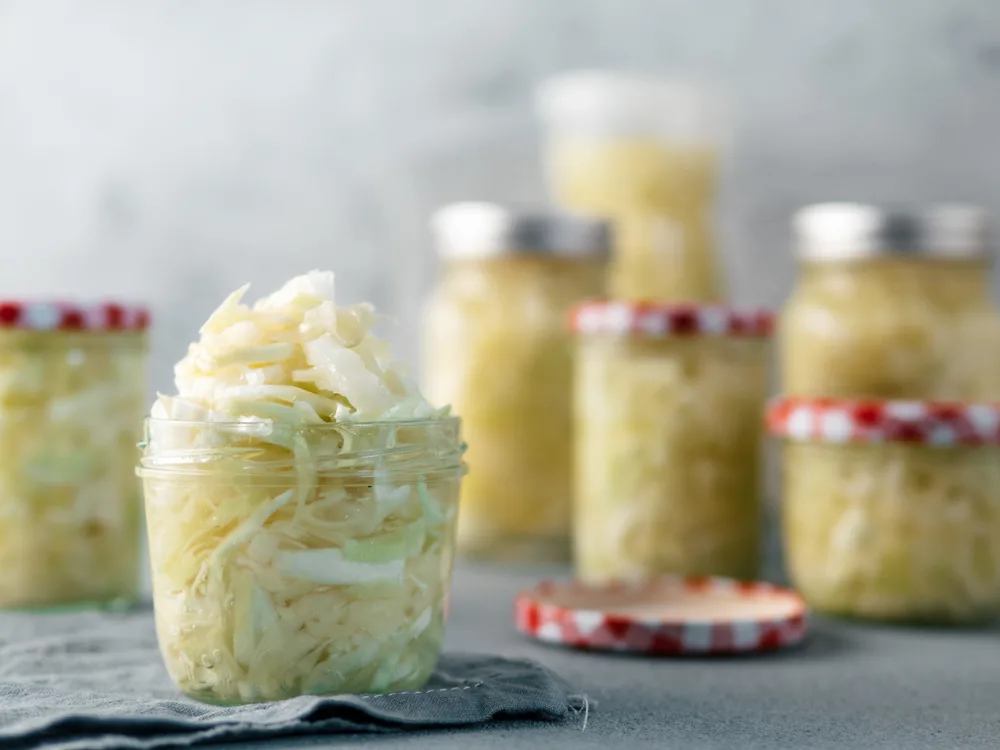
Thinly sliced cabbage and salt are all it takes to make a nutritious side dish that our ancestors once ate.
It won’t taste like canned store-bought sauerkraut, so don’t be anticipating the same experience. But will it taste good? Yes, it certainly will.
To get started, you will need to shred your cabbage finely, and add it to a fermentation crock, along with salt and spices (if desired).
There are a few more steps, but the essence of the recipe is that you have to wait 3-6 weeks for the cabbage to sour. In the meantime, you can explore more ways of preserving your bounty.
For an in-depth recipe, check out Cultures for Health, an authority on all things fermented: How to Make Sauerkraut
Entire heads of cabbage
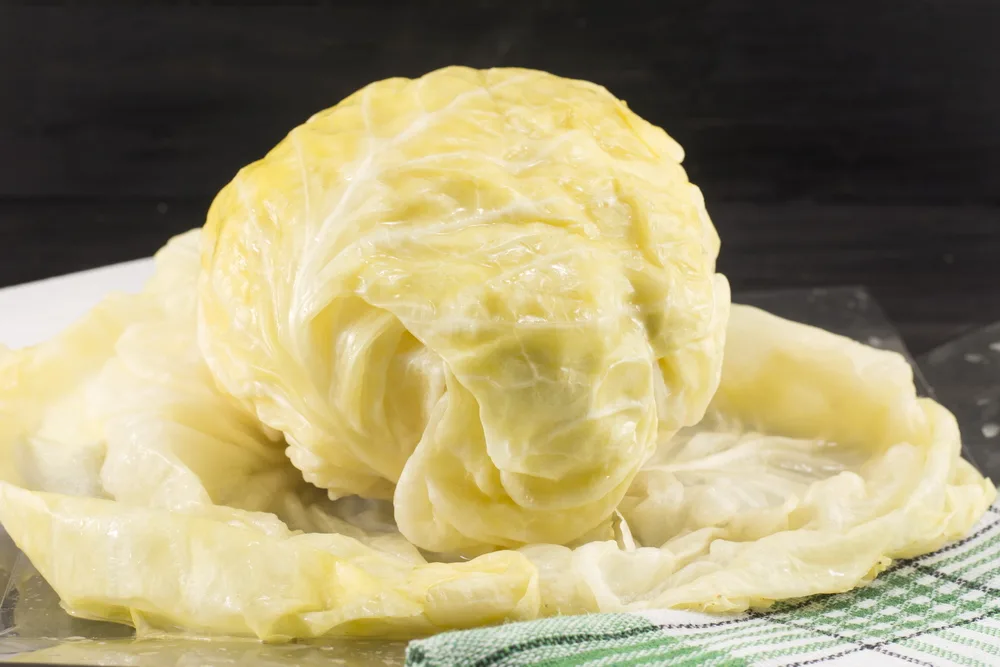
If you’ve never had a true cabbage roll made from whole leaves of fermented cabbage, you must come to Eastern Europe to try them. Or make a mouthwatering dinner of sarmale at home.
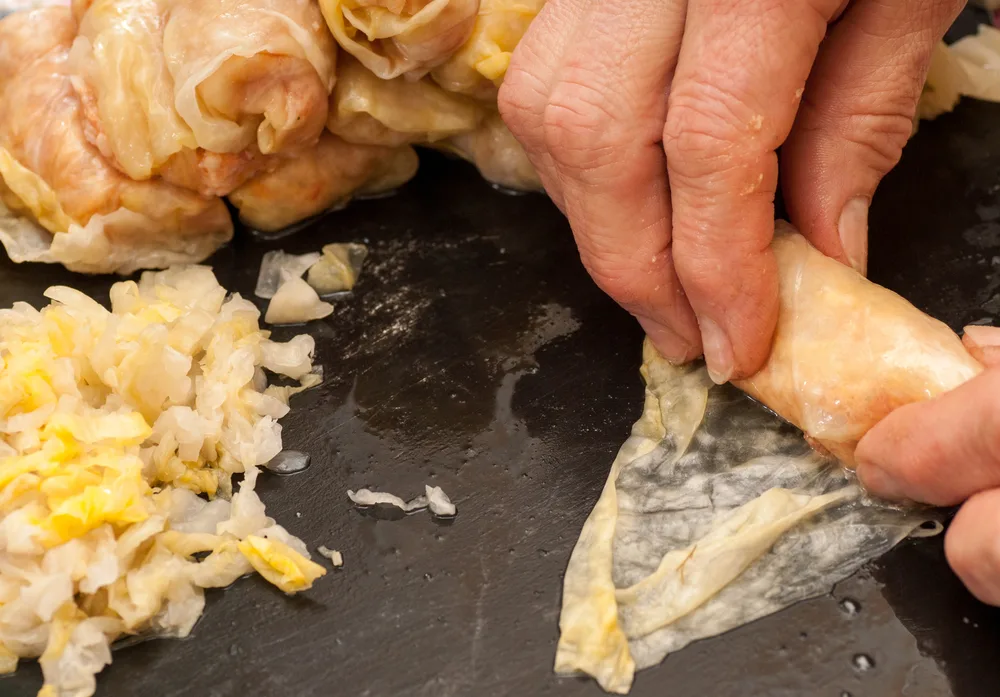
Knowing how to ferment whole heads of cabbage is a tradition that is still passed down to each generation, though low-tech ways of old are always in danger of dying out. Fermentation is definitely one that more people should know about.
Fermenting whole cabbages will take up some space in your home, as well as a large wooden barrel, or food-grade plastic tub, yet the end result – should you be successful – is absolutely amazing.
With the price of cabbages so low, fermenting them is a must-try, with only delightful sourness to gain, and little to lose.
Here is one way to go about making your own sour cabbage leaves, so you can eat bowlfuls of warming cabbage rolls all throughout the colder months.
Romanian Fermented Whole Cabbage @ Wild Fermentation
2. Dehydrating cabbage
Drying your cabbage for long-term storage is as simple as cutting and arranging the slices on your dehydrator trays.
In about 10 hours, between 125-135°F, your cabbage will be nice and dry, but not quite ready for packing away. Let them come to room temperature slowly first, then pack them away in glass jars or vacuum sealed bags for storage.
While dehydrated cabbage may not be first on your list of ways to preserve it, know that it reconstitutes well and can quickly be added to dishes that have plenty of liquid, such as soups and stews. You can just add it straight to the pot as you are cooking.
The best part is, you can dehydrate any kind of cabbage, year-round. So, this works well with summer varieties that can’t be stored for as long.
It works well with these types of cabbage:
- red
- white
- green
- savoy
- Napa
- and Brussels sprouts
Go ahead and dehydrate them – it saves a lot of space in your pantry.
Dehydrating Cabbage For Soups and Slaws @ Easy Food Dehydrating
3. Freezing cabbage
While cabbage has a long growing season, the time to harvest them is relatively short in comparison.
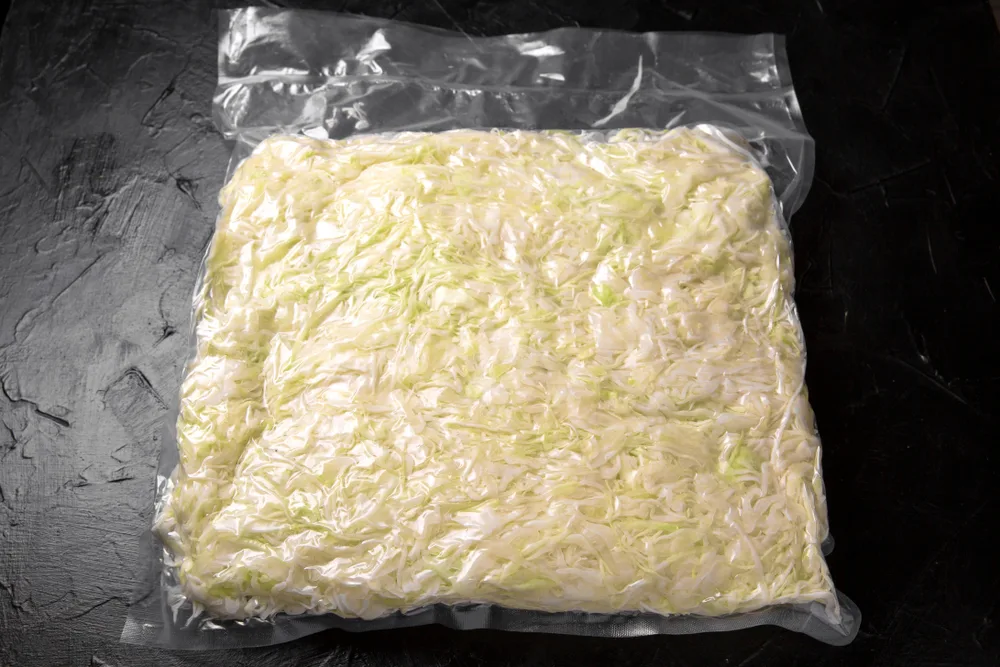
Summer-harvested cabbages must be consumed fresh within a matter of weeks, in any number of ways. But don’t let that stop you from planting and growing more than you need. For there are still plenty more ways to preserve them, outside of dehydrating and fermenting.
One of the easiest, and fastest, ways to store cabbage, is by tossing it in the freezer.
Not whole, of course, but cut into wedges, blanched, drained and sealed in freezer bags.
Naturally, you can shred it or freeze whole leaves as well. It all depends on how you wish to cook with it later on.
Just as with dehydrated cabbage, all you need to do, is remove it from the freezer and put it in whatever you are cooking – there is absolutely no need to thaw it before adding to the pot.
However, it can be thawed in the fridge if your coleslaw or salad calls for “fresh” cabbage. If you froze it in wedges, it’s easy enough to slice them into thin strips.
If you freeze cabbage without blanching, it will last a mere 2 months in the freezer. Taking the extra step of blanching will give you an abundance until next summer, 9 months away.
How to Freeze Cabbage – The Best Way @ Foods Guy
4. Canning
If you’re living in the low-tech world, or perhaps exploring off-grid solutions, using a fridge or a freezer might present you with food storage limitations.
We, ourselves, live life simply and well without a fridge or freezer. Instead, opting for more traditional methods of food preservation that are electricity-free.
Where we meet modern life, is somewhere in the middle. Our pantry is full of well-preserved fruit jams, compotes, chutneys, pickles, relishes, dried herbs of all kinds, from plants foraged from the wild and the garden.
Even if you use modern appliances to help you preserve your food, it always makes sense to learn how to can as well. It can serve you very well in times of power outages, in saving money and in having nutritious food that is always ready-to-eat.
Canning a head of cabbage or two is a wonderful way to increase the selection in your pantry.
Pickled cabbage slaw
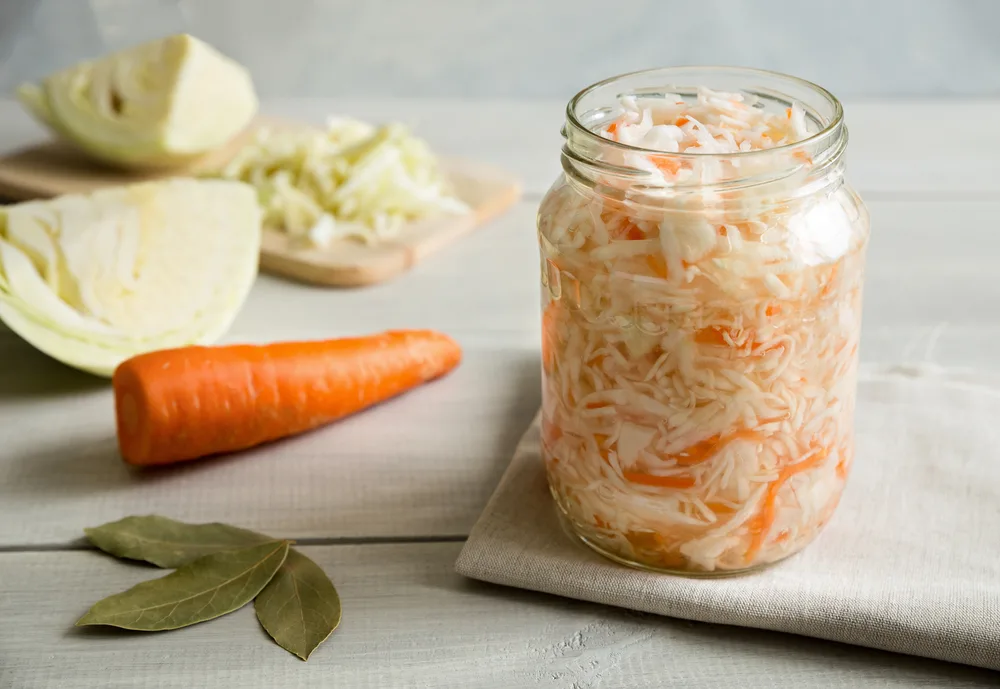
One thing we make every year without fail is zucchini relish.
Not that we don’t like pickled cabbage. We do. It’s just that ours don’t always grow as well as we would like. One day we will get there – to find a glorious large cabbage, untouched by slugs and bugs tucked away in the corner of the garden.
Setting those dreams aside, a nice, hefty cabbage from the market will have to do.
And a way to preserve it in jars?
Something that combines carrots, sweet peppers, onions and hot peppers with zesty vinegar and a hint of sweetness.
This recipe is the one to make with your prize winning cabbage:
Pickled Cabbage Slaw @ SB Canning
Pickled spiced red cabbage
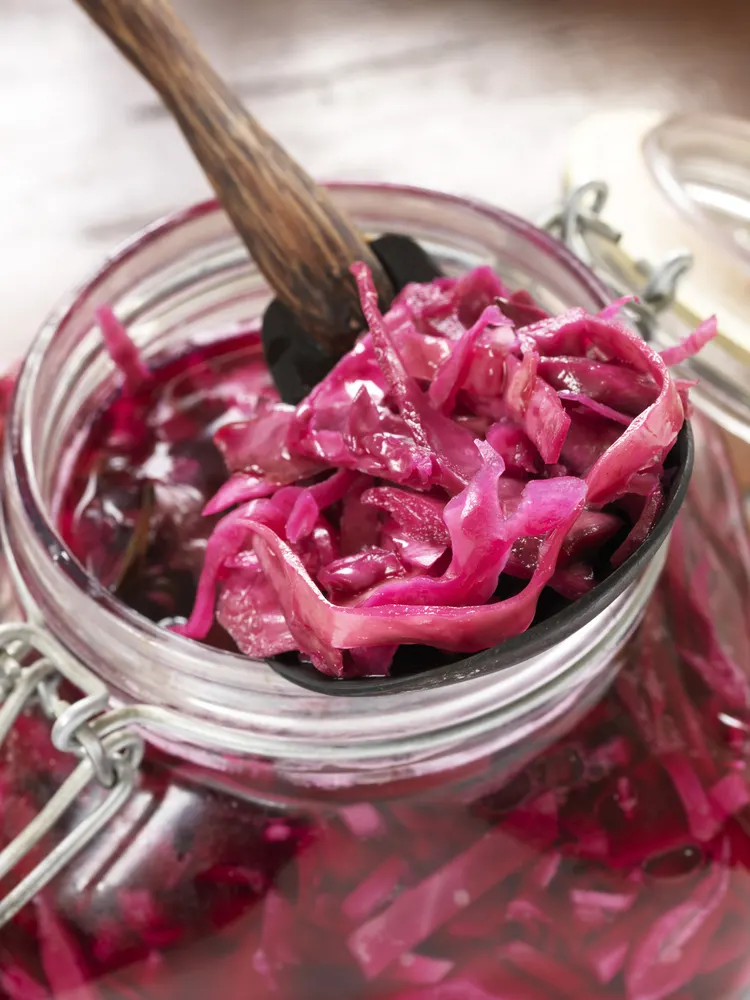
Most recipes focus on green varieites, though we find it of essential visual interest to eat something with intense color from time to time.
Red cabbage does the job nicely.
It can be used in just about every way as the ‘regular’ old cabbage, but we have found that it goes well with several spices that are better suited to purple-leafed varieties such as mace, cloves, celery seed and allspice.
One thing you’ll find about red cabbages is they tend to be tougher, or not as tender as green varieties. They also take longer to mature in the garden.
This also means you can store them for longer in a dark, cool place.
If you’re sitting on the fence about planting some red cabbages next spring, take some time to flip through the pages of seed catalogs to get inspired.
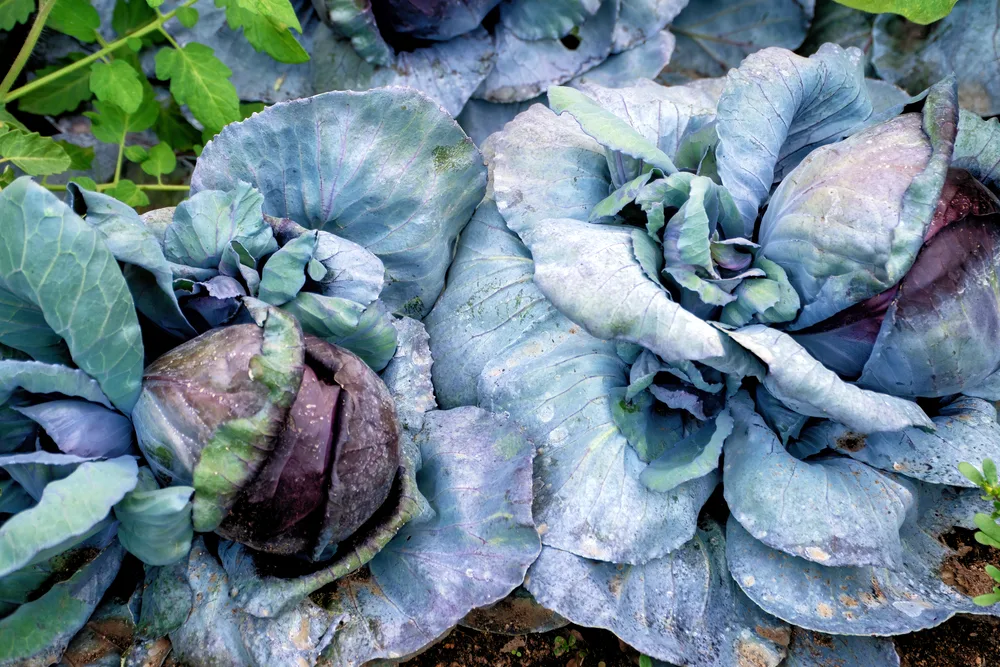
In the meantime, get ready to preserve a few heads of tasty red cabbage.
Pickles Spiced Red Cabbage @ Bernardin
5. Cold storage/root cellar
While fewer and fewer people get to experience what it’s like to have a root cellar, let me say now that we have one, we can’t imagine ever living without it.
Ours is located under the house, with stone walls and a clay dirt floor, and a small east facing window for airflow. In summer the door stays open, in winter, once the temperatures dip below freezing, we keep it shut.
Fresh apples keep for 8-9 months beneath layers of hay, winter squash lasts for several months too. In summertime it serves as a place to cool water, melons and various dairy products. It even makes a wonderful space to store potatoes, in the darkness, surrounded by the same hand-scythed hay.
The cool, dark space of a cellar is ideal for storing cabbages.
Wrap each head with brown paper and place them on shelves a few inches apart, making sure they don’t touch.
As the months in storage progress, take time to check on the status of your cabbages. Watch for signs they are going bad, such as change of smell, or yellowing of leaves.
Cabbages in cold storage can be kept for about 6 months.
6. Storing cabbage in the ground
An unconventional way of storing cabbages is to pull them up by their roots, dig a hole, place them upside down with the roots sticking out, cover them back up with the soil and leave them that way until you’re ready to “harvest”.
For added protection, you could even cover it with a bed of mulch (straw, hay or fall leaves) for an extra thermal layer.
It can’t get any simpler than that.
7. Storing cabbage in the fridge
Last, but not least, is storing cabbage in the fridge.
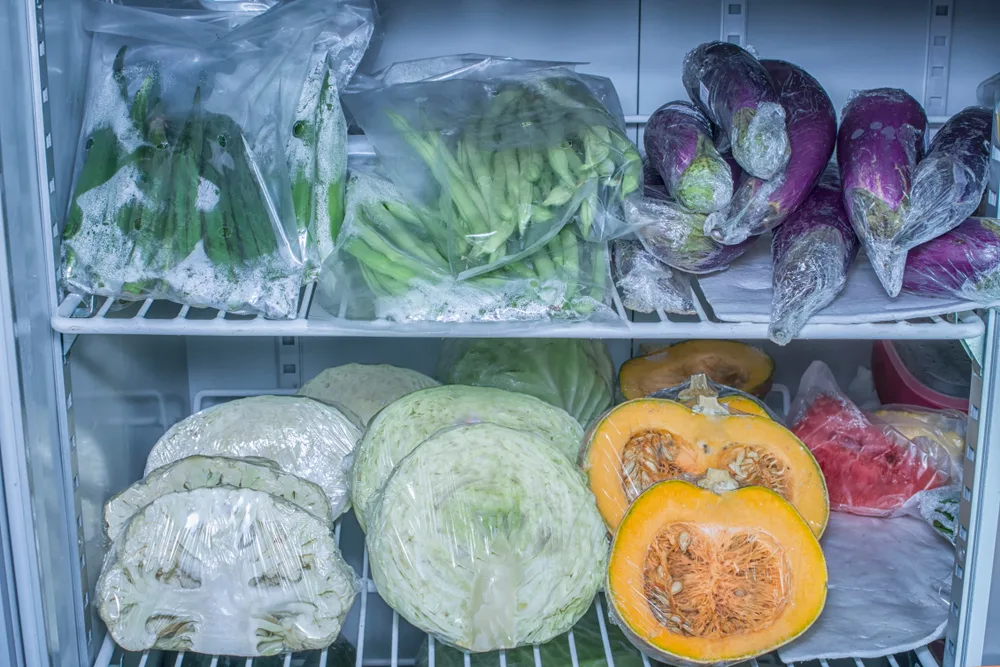
In this way, they can last anywhere from a few weeks, up to a couple of months. By no means long-term, though maybe just enough, in combination with other preservation methods to keep you going.
And if you only have a few heads from your garden this year, this may in fact be the least complicated.
If you choose to store cabbages in the refrigerator, be sure not to wash them before refrigerating them.
Give them a rinse only when you’re ready to use them. And store them whole if given the chance. This will help them maintain their moisture content. After all, high humidity is what they like.
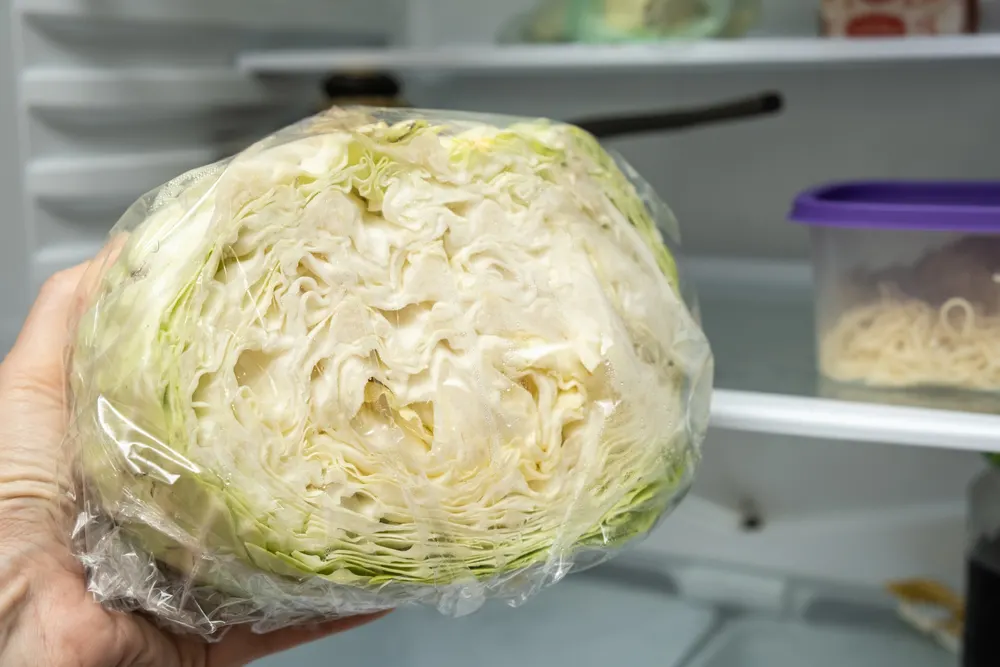
When you finally do cut into a cabbage, make sure to wrap it tightly before putting it back into the cold drawer of the fridge. Be aware, however, it may start to smell after a time, which may not go down so well with that cup of milk.
If you had 50+ lbs. of cabbage, what storage method would be first on your list?

Get the famous Rural Sprout newsletter delivered to your inbox.
Including Sunday musings from our editor, Tracey, as well as “What’s Up Wednesday” our roundup of what’s in season and new article updates and alerts.

